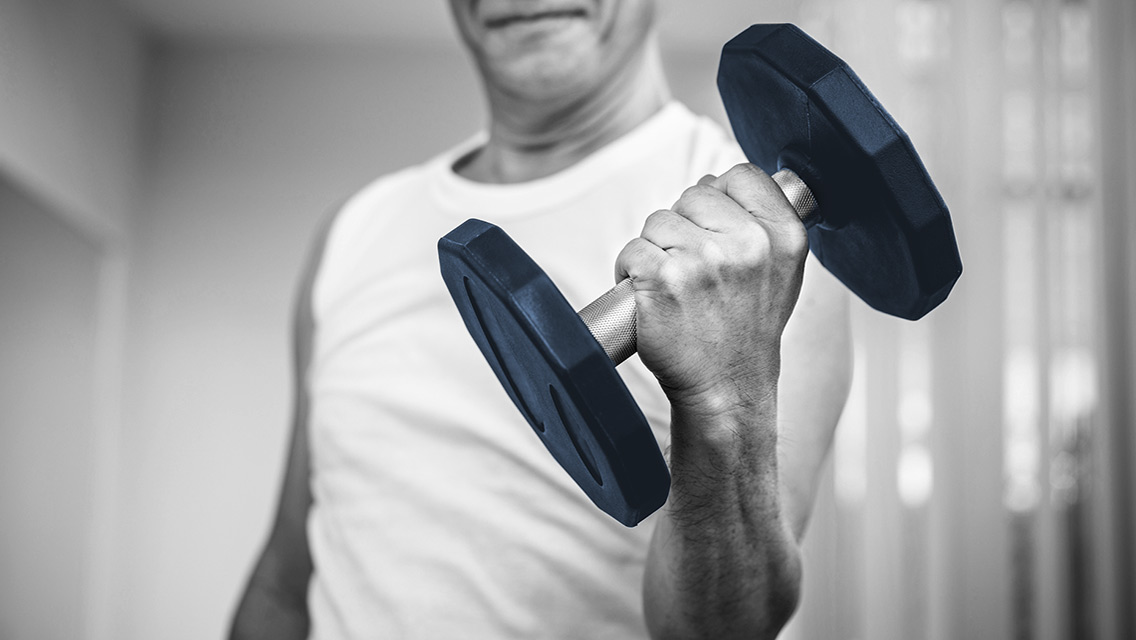I stumbled the other day upon a story about a 93-year-old Irishman named Richard Morgan, who seems to be something of a superman among the senior set. The retired baker and battery maker took up exercising in his 70s because he was bored and eventually became a world champion indoor rower while building the cardiovascular profile of someone 50 or 60 years younger.
Morgan’s athletic prowess is so notable, in fact, that a team of researchers at the University of Limerick recently recruited him to help them better understand how physical activity can affect the aging process. After gathering basic information on his body composition (80 percent muscle, 15 percent fat), diet (lots of protein), and metabolic, heart, and lung function, they monitored various biomarkers while he rowed a simulated 2,000-meter time trial.
Results of their case study revealed that his heart rate peaked well above what researchers have come to expect from a nonagenarian (153 beats per minutes), a sign of a very healthy cardiovascular system. And it reached that peak at a rate similar to that of an athletic 30- or 40-year-old, indicating his heart’s ability to rapidly deliver oxygen and fuel to his muscles.
The fact that Morgan has managed to defy the routine ravages of aging may suggest some sophisticated training program and professional guidance, but his exercise regimen is neither complex nor particularly intense — and it mostly takes place in a backyard shed. As Gretchen Reynolds reports in the Washington Post, he spends about 40 minutes a day on his rowing machine, and he lifts weights two or three times a week.
Scott Trappe, PhD, director of the Human Performance Laboratory at Ball State University, who was not involved in the study, tells Reynolds the results offer additional fodder to researchers studying exercise adaptation. “We are still learning about starting a late-life exercise program,” he says, “but the evidence is pretty clear that the human body maintains the ability to adapt to exercise at any age.”
“We are still learning about starting a late-life exercise program,” Scott Trappe, PhD, says, “but the evidence is pretty clear that the human body maintains the ability to adapt to exercise at any age.”
And recent research suggests that weight training, in particular, may play a key role in fending off a variety of age-related maladies. A 2022 study from the University of Michigan, for instance, found that muscle weakness — measured by grip strength — is linked to more rapid biological aging.
“This suggests that if you maintain your muscle strength across the lifespan, you may be able to protect against many common age-related diseases,” notes lead study author Mark Peterson, PhD, an associate professor of physical medicine and rehabilitation. “We know that smoking, for example, can be a powerful predictor of disease and mortality, but now we know that muscle weakness could be the new smoking.”
Peterson’s study followed closely on the heels of research published in the British Journal of Sports Medicine that analyzed the exercise regimens and mortality rates of nearly 100,00 seniors (average age of 71). Those who lifted weights regularly as part of a moderately active lifestyle were about half as likely as their more sedentary counterparts to die during a 10-year follow-up period.
And, as the latest research in this field has demonstrated, it’s apparently never too late to start pumping iron. A study published last month in the International Journal of Sport Nutrition and Exercise Metabolism suggests that even weightlifting newbies in their 80s and 90s can reap real benefits from a strength-training regimen.
“It is often assumed that the oldest old, or, say, people past the age of 80, are less likely to be able to gain muscle mass and strength,” study coauthor Luc van Loon, PhD, a professor of human biology at Maastricht University, tells the Post. But, he adds, that assumption arises from the tendency of researchers to ignore people in their 80s and older when recruiting subjects for their studies. Common sense, he argues, would suggest that their muscles would respond similarly to those of younger folks: “Muscle tissue is constantly turning over as long as we live.”
Researchers recruited 29 healthy seniors and separated them into two groups: one that included those who were 65 to 75 years old; the other comprising those older than 85. Both groups engaged in three supervised strength-training sessions a week for 12 weeks, hoisting weights that required as much as 80 percent of their full strength.
The seniors “loved participating in the intervention,” says lead study author Gabriel Nasri Marzuca-Nassr, PhD, an associate professor at Chile’s University of La Frontera. Absenteeism was low, he adds, and injuries were rare.
“[Healthy] older people can certainly respond to resistance training, that their muscles are still plastic.”
After three months, researchers were surprised to discover that the older participants built relatively more muscle mass (11 percent) and strength (46 percent) than their younger counterparts (10 percent and 38 percent, respectively). Older subjects also showed more improvement in their general mobility.
It’s a small study, of course, and the hands-on training offered to the participants would be hard for most seniors to replicate in real life, rendering the results less conclusive than we may prefer. Still, the results may offer some inspiration to older adults, notes Tommy Lundberg, PhD, a Karolinska Institute exercise researcher who was not involved in the study. “It shows that healthy older people can certainly respond to resistance training, that their muscles are still plastic.”
But, as Marzuca-Nassr advises, it’s not ideal to wait until your golden years to pick up a barbell. “It’s better to start at an earlier age and continue throughout life.”
That may be wise counsel for us mere mortals, but I suspect Mr. Morgan would disagree.





This Post Has 0 Comments